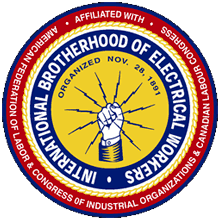August 1, 2014
By Joe Maniscalco
Queens, NY – Bryan Brady, director of the Ironworkers’ 25,000-square-foot Training Center in Astoria is right when he likens the union’s would-be apprentices to professional athletes – watching the driven young men being timed scaling 35-foot tall columns and hoisting 2,000-pound steel girders off the ground, immediately draws comparisons to what NFL rookies endure – maybe even the U.S. Marines.
“Besides the NFL and Major League Baseball, and the NHL – earning a living doesn’t get much more physically demanding on your body than being a structural ironworker,” Brady says.
Despite that sobering reality, an ironworker’s career, constructing everything from buildings to bridges, could last an incredible 30 years or more.
Local 40/361 regularly opens up its intensive apprenticeship program about every two- to three years. This year, the union distributed 3,200 applications. Only a tiny fraction of that number – about 150 – will actually be accepted into the three-year apprenticeship program, however. More slots could be made available, but stiff competition from lowballing non-union outfits is limiting the number of job opportunities.
“The lives of the people coming through these doors are going to change,” Brady says.
Before that happens, however, candidates must pass muster – and becoming one of the folks responsible for constantly transforming the city skyline isn’t easy.
In addition to scaling girders and hoisting steel beams, applicants must prove their mettle in other ways like running 1.1 miles against the clock, doing tons of push-ups and raising 75-pound buckets of bolts from high atop a scaffold. They’ve also got to hit the books just as hard – first year students undergo orientation and study safey practices, structural steel erection, rigging and more.
About 130 candidates hoping for a shot at the middle-class showed up at the Training Center located at 35-23 36th Street when LaborPress visited the site on July 30. Virtually all prospective candidates are male. The union routinely only gets a handful of women interesting in entering the apprenticeship program.
“It’s not a tremendous percentage, but the women we have are usually very good,” Brady says. “Percentage-wise, they’re better than the men.”
Jason Chadee, 31, an instructor at the Training Center for the last four years, says he knows exactly what he’s looking for in a prospective ironworker.
“A good ironworker is well motivated, physically fit, humble, and has the ability to work well with others – and to listen,” Chadee says.
Exhibiting those same kinds of qualities has helped Chadee land several high-profile jobs – including working on the
“I have great guys around me teaching me as I go,” Chadee says. “This business has been great to me. I appreciate it. And I look forward to giving back as much as possible.”
Brady says that the union has always been proud of the hard work its members do and how productive they are.
“We truly feel that not many people are able to produce more than structural ironworkers,” Brady says. “When a structural ironworker shows up to a job site, its’ a hole in the ground. And when they leave – three, four, or five months later – there’s a steel structure or building there. It may be a school, a stadium or a bridge – but It wasn’t there the first day when the ironworkers started there. We take a lot of pride in that.”
The Training Center on 36th Street has been in operation for 15 years – but the union has had an apprenticeship program since 1944. According to Brady, it is the sixth oldest apprenticeship program in the state.
Apprentices enrolled in the program attend classes on Tuesdays, Wednesdays and Saturdays from August to June, while simultaneously working in the field. Upon graduation, they will have amassed over 612 hours of classroom training and anywhere from 4,000 to 8,000 man-hours in the field.
“Our employers and the union work together to provide this training to keep this facility going,” Brady adds. “Whatever our contractors need, whatever they require we can give them.”
The facility itself is spread out over two floors and houses nine classrooms and 33 welding booths. It accommodates about 280 apprentices throughout the year.
“Sometimes it’s a little bit overwhelming for the guys when they’re new,” Chadee says. “But that’s what we’re here for. We take them step-by-step and give them the training that they need to work in this industry.”
Ironworkers responsible for erecting towering steel skeletons throughout the city, abandoned hot rivets and moved on to bolt guns to assemble girders about 50 years ago. But since then, not much has changed.
“Construction in and of itself – fortunately for us – is not easily replaced by technology,” Brady says. “Obviously, some things have changed. Safety is a real big thing now, and the use of hydraulic cranes.”
But what technological improvement have been made in the industry, haven’t exactly meant effortless application for ironworkers themselves. Part of every would-be apprentice’s testing, for instance, involves the successful use of a 35-pound impact wrench held for seven full seconds in no less than 12 different positions.
“The cranes and those types of things are obviously much more advanced,” Brady says. “But It’s still a very labor intensive job with lots of heavy, hard work – which we appreciate.”



